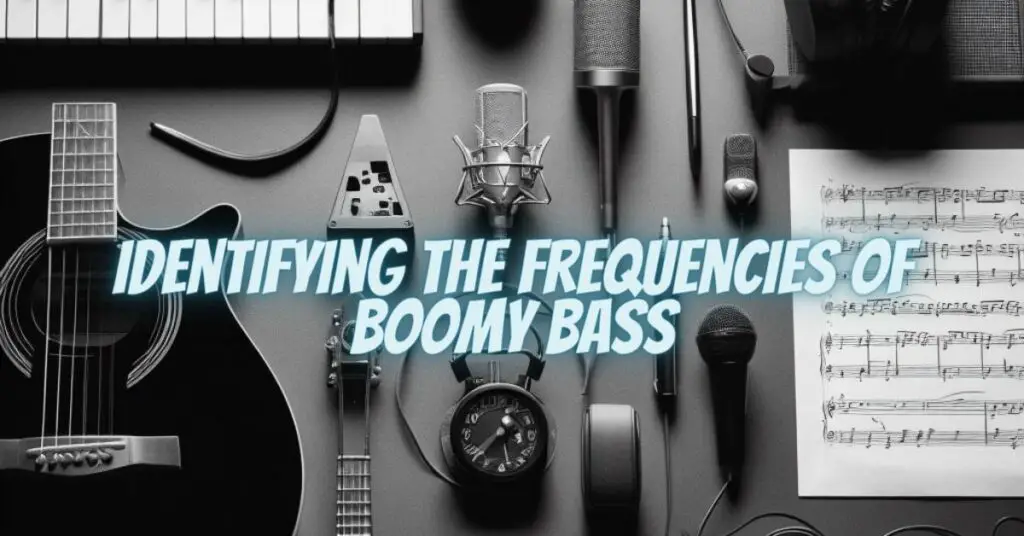The term “boomy bass” is frequently used in audio and music production to describe a less-than-ideal low-frequency response that’s characterized by an excessive, one-note quality in the bass. Understanding the boomy bass frequency and how to manage it is essential for achieving a balanced and enjoyable sound. In this article, we’ll explore what the boomy bass frequency is, its causes, and how to address it effectively.
Defining the Boomy Bass Frequency
Boomy bass is a sonic issue related to the frequency range of bass frequencies, primarily in the sub-bass and low-bass regions. The boomy bass frequency can often be identified by a pronounced resonance that lingers longer than it should. This resonance creates a muddled and overpowering bass presence, detracting from the overall audio quality and making it less enjoyable to listen to.
Common Causes of Boomy Bass Frequency
- Room Acoustics: Room acoustics play a significant role in the perception of boomy bass. Reflective surfaces, such as bare walls, hardwood floors, and large windows, can cause sound waves to bounce around the room, reinforcing certain bass frequencies and creating a boomy sound.
- Room Modes: Room modes, also known as resonant frequencies, occur due to sound waves bouncing between room surfaces. These modes can amplify specific bass frequencies, leading to a boomy bass frequency. The location of the listener within the room can also influence how they perceive these resonances.
- Improper Speaker Placement: The placement of speakers within a room can exacerbate boomy bass. If speakers are positioned too close to walls or corners, sound waves can reflect off these surfaces and reinforce certain bass frequencies, causing a boomy sound.
- Subwoofer Misconfiguration: Subwoofers are responsible for producing low-frequency sound. Misconfiguring subwoofers, with settings like high gain or inappropriate crossover frequencies, can overemphasize specific bass frequencies, contributing to the boomy bass frequency.
Addressing the Boomy Bass Frequency
- Room Acoustic Treatment: Improve the acoustics of your listening environment by adding room treatment elements, such as bass traps, diffusers, and absorbers. These treatments help control reflections, address room modes, and reduce the boomy bass frequency.
- Optimal Speaker Placement: Experiment with speaker placement to minimize the impact of room acoustics. Moving speakers away from walls and corners can create a more balanced low-frequency response, reducing the boomy bass frequency.
- Subwoofer Calibration: Ensure that your subwoofer is properly calibrated by adjusting settings like gain, crossover frequency, and phase. Calibration tools, such as sound level meters or calibration software, can help achieve an integrated and balanced sound, mitigating the boomy bass frequency.
- EQ Adjustment: Utilize an equalizer to fine-tune your audio system. Identify and gently reduce the problematic low-frequency bands through EQ adjustments. This helps correct the boomy bass frequency and achieve a more natural and balanced sound.
- Listening Position: Try different listening positions within your room to find a spot with a more balanced low-frequency response, minimizing the impact of the boomy bass frequency.
- Room Measurements: Invest in measurement tools, such as calibrated microphones and room measurement software, to identify specific room-related issues that contribute to the boomy bass frequency. These tools can guide you in addressing the issue more accurately.
The boomy bass frequency can be a challenging problem in audio and music production, but with a better understanding of its causes and the application of the suggested solutions, you can significantly improve the bass response in your listening environment. Achieving a balanced and controlled bass response enhances the overall audio quality, ensuring that you hear audio as it was intended to be heard, without unwanted resonance and distortion.


